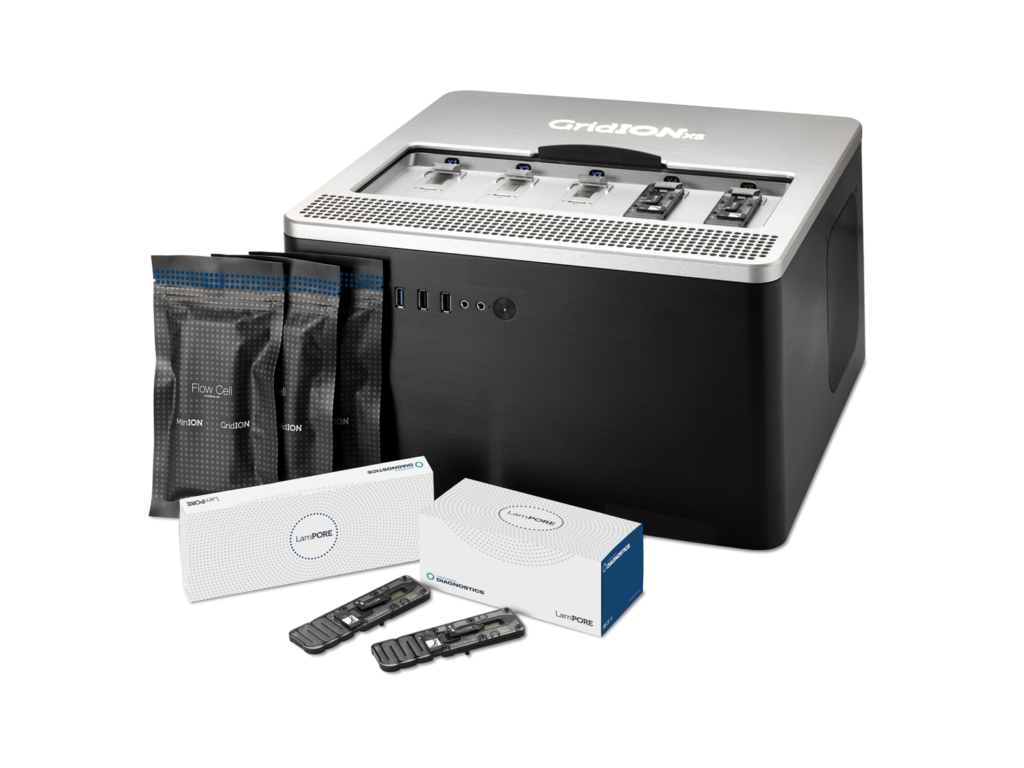Scientists from the University of Oxford’s Nuffield Department of Medicine have today published their evaluation of LamPORE, a novel diagnostic platform for detecting SARS-CoV-2 RNA.

This technology, which combines loop-mediated isothermal amplification with nanopore sequencing, has the potential to analyse thousands of samples per day on a single instrument.
The full evaluation paper was published on the pre-print server medRxiv.
The collaboration between colleagues at Public Health England Porton Down (PHE), the University of Sheffield, the University of Oxford, including support from the NIHR Oxford Biomedical Research Centre (BRC), evaluated the performance of LamPORE against RT-PCR – the most commonly-used laboratory test for Covid-19.
They used RNA extracted from two types of samples: initially, mock samples formed of saliva from people without infection that had a known quantity of virus added to it; and subsequently nose and throat swabs from real Covid-19 patients collected during routine care at two UK hospitals – Oxford University Hospitals NHS Foundation Trust and Sheffield Teaching Hospitals NHS Foundation Trust.
The positive clinical specimens came mostly from patients with symptomatic infection, and among these LamPORE had a diagnostic sensitivity of 99.1% (i.e. it was positive in 226 of 228 samples positive by RT-PCR). Among negative clinical specimens, including 153 with other respiratory pathogens detected, LamPORE had a diagnostic specificity of 99.6% (i.e. it was negative in 278 of 279 samples negative by RT-PCR). Overall, 1.4% of samples produced an indeterminate result on first testing, and repeat LamPORE testing on the same RNA extract had a reproducibility of 96.8%.
These results indicate that LamPORE has a similar performance to RT-PCR for the diagnosis of SARS-CoV-2 infection in symptomatic patients.

The evaluation as led by Professor Derrick Crook, from the Nuffield Department of Medicine and the NIHR Oxford BRC’s Theme Lead for Antimicrobial Resistance and Modernising Microbiology. He said: “This evaluation shows that LamPORE offers a promising approach to high-throughput testing.”
Prof Helen McShane, Director of the NIHR Oxford BRC, said: “Oxford’s expertise in clinical microbiology and pathogen sequencing has been combined with state-of-the-art sequencing technology from Oxford Nanopore to generate this really important data. This is an excellent example of how NIHR funding to support academic–industrial collaborations can lead to the development of new tools to help us control the SARS-CoV-2 pandemic.”
Dr Steve Pullan, from PHE Porton Down, said: “Our early data indicates LamPORE to be a credible alternative to conventional PCR-based diagnostics, which has the potential to provide further high-throughput testing capacity.”
Dr Cariad Evans, Consultant Virologist at Sheffield Teaching Hospitals NHS Foundation Trust and joint senior author of the published evaluation, said: “We are pleased to have contributed to this important evaluation. These are encouraging early findings and we are proud to have supported Public Health England and our academic partners in this essential Covid-19 research.”
The LamPORE test uses standard Oxford Nanopore Technologies flow cells compatible with the desktop GridION device and palm-sized MinION Mk1C device. It has the potential to be used both for distributed and centralised laboratory Covid-19 testing.
The protocol currently allows up to 96 samples to be analysed on one flow cell, potentially allowing thousands of samples to be analysed per day on a single instrument. The workflow involves a 40-minute amplification, followed by a library preparation and a 60-minute sequencing run, generating results in a comparable time to RT-PCR when starting with extracted RNA.
Using LamPORE for high-throughput testing of tens or hundreds of thousands of samples per day is dependent on a streamlined workflow, including automated sample handling and integration with laboratory information management systems. The scientists conclude that LamPORE on extracted RNA offers a promising method of high throughput SARS-CoV-2 testing. It could be of much broader use if shown to work with extraction-free methods of sample preparation and automated workflows.